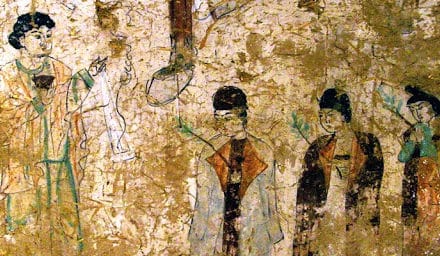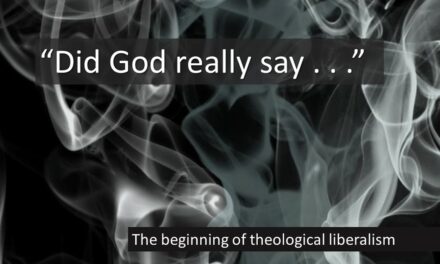This is the 5th episode in the podcast mini-series we’re calling “The Long Road to Reform.”
What do you think of when I say “The Inquisition”?
Many shudder. Some get a queasy feeling in their stomach because of the way the Inquisition has been cast in novels and movies. There’s a bit of truth in that portrayal, one-sided and stereo-typed as it may be.
We’re backing up yet again in our timeline as we take a closer look at this sad chapter of Church History.
The 4th Lateran Council of 1215 was the high-water mark of the medieval papacy under Innocent III. The Council was little more than a rubber-stamp committee for Innocent’s reforms. Those brought much needed positive change to the morals of the clergy, but installed structures that worked against later reform. The 4th Lateran Council established the doctrine of transubstantiation and the sacrament of penance. It also made official the Inquisition, which had begun as a commission of inquiry under Pope Alexander III a generation before, but now became a permanent feature.
The major challenge Innocent III faced was from the Albigensians, AKA the Cathars, inhabiting Southern France. Since we covered this maybe-heretical group in an earlier episode, we’ll just say that, if the reports by their opponents about them are true, they were a dualistic pseudo-Christian cult-turned-movement that possessed a lot of energy during its relatively short life. Innocent sought to convert them by preaching and debates, but early efforts met with little success. So he approved a Crusade against them from 1209 that lasted the next 20 yrs. The Crusade crushed the Albigensians, devastating Southern France in the process. It was the Albigensians that so provoked Dominic, and propelled his efforts in launching the Dominicans.
Though this heresy was eventually put down, their earlier success convinced Innocent the Church would be better served if it had a means to conduct official investigations into questions of doctrine. Earlier popes authorized bishops to investigate accused heretics based on rumor alone. It was up to the accused to prove their innocence. This became the foundational premise of the Inquisition.
The Inquisition was an ecclesiastical institution whose aim was to search out and punish heretics. The punishment for heresy was death, since heresy was regarded on par with treason and witchcraft; crimes that stood to imperil the health and well-being of thousands. In 1199, Innocent III issued a decretal saying for the first time that heresy was treason under Roman law.
In the late 12th C, bishops turned confirmed heretics over to secular authorities for execution. The 4th Lateran Council confirmed these regulations and threatened excommunication of temporal rulers who failed to rid their territory of heresy.
In 1229, the Synod of Toulouse drew up the procedures for seeking out and punishing heresy. The Inquisitor was subject to no law outside the Pope’s authority and word. He was prosecutor and judge. The “trial” was secret, with the accused having to prove their innocence, as in all courts following Roman law, without the benefit of counsel or knowledge of the accusers.
The final step came in 1252 when Pope Innocent IV authorized torture as a means of getting information and confessions from accused heretics.
Till then, Church leaders and thinkers rejected with horror the very thought of using torture. But no such reserve remained after Innocent III ascended the papal throne and the Catholic Church achieved its majestic and powerful unity. Noteworthy among the tortures used by the Inquisition is that, while execution was still carried out by the civil government, it was priests who did the torturing, with fire, stretching on the rack, or beatings that allowed no blood-letting. Remember, good Christians can’t shed blood.
It was an ugly business, but following the ideas of Augustine, almost everyone agreed that saving the body by amputating a rotten limb was the path of wisdom. The Church was the body; the heretic the rotten limb. One more abhorrent idea we can attribute to Augustine.
The Inquisition developed a complex system for classifying heresy and heretics. There were heretics who simply added additional beliefs to the essentials; then there were those who denied those essentials. There were perfect and imperfect heretics. Those accused of heresy were categorized as lightly suspect, vehemently suspect, or violently suspect.
Typically, the Inquisitor would arrive in a town and begin his work by preaching a sermon calling for people to bring forth charges against those they knew were guilty of something damnable, or confessing something in themselves they feared was aberrant. People were given a period of grace to make this initial confession. This was called the “General Inquisition.” When that period expired, the “Special Inquisition” began and the accused were summoned to trial.
The Inquisitor then functioned as Prosecutor, Judge and Jury. The trial was held in secret, the testimony of only two witnesses enough to condemn. The accused most often wasn’t even aware of the charges against them. So they had no context for answering questions. Witnesses weren’t named but there was no defense attorney. Well, there might have been, except for the fact that any lawyer who rode defense was likely to then be brought up on charges himself.
Trials could last years, while the accused was kept in prison. Once torture was applied, it was kept on until a confession was secured. All this because the Inquisition followed strict rules. One of them the repeating of torture. It could only be used ONCE; in one hearing, which might last months, even years. So, once torture was applied, it was with the understanding the victim would either die or confess. As I said, the Inquisition followed a strict set of rules, except when it didn’t; which as a rule, was often.
Children, the elderly, and pregnant women were exempt from torture. Except when they weren’t.
Those convicted of lighter charges then recanted their error were allowed to do penance and bore physical markers of their having fallen afoul of the Inquisition for the rest of their lives. The worst of the heretics were hauled to the stake. Their lands and possessions confiscated by the Inquisitor, who kept them, adding them to the Church’s treasury, or sold off. The heirs of heretics who’d lost lands were technically able to reclaim them, but were practicably rarely able to.
The Inquisition met with varying success around Europe. In Spain, it was co-opted by the crown. The Spanish Inquisition then became a thing of abject terror; what most think of today when they hear the word “Inquisition.” The Spanish Inquisition was turned to both religious and political ends, with the accused often being convicted more for the acquisition of their property than for heresy.
In Germany, the Inquisition was fierce under the zealous fanatic Conrad of Marburg, but when he was murdered, it fizzled out. France’s Inquisitorial campaign differed from North to South. In Southern France, Inquisitors continued to root out the Cathars, while in the North, trials were often a reflection of old feuds, with nobles accusing one another for political and economic ends. Italy, with its patchwork of provinces saw spotty application of the Inquisition. In England, it hardly appeared.
Modern Christians find it nearly impossible to understand the medieval attitude toward heresy. We regard faith as a matter of personal choice and seldom think of religious beliefs as a matter of life and death. Why should anyone die for their faith, or kill another for theirs?
In Medieval Europe, Christians would consider our modern view equally odd. Faith wasn’t a private and individual intellectual preserve. The Christian Faith was the cement of society. Denial of a single article of the Faith was understood as a kind of treason because it imperiled one’s neighbors. An apostate or heretic, if not punished by the civil authorities might incur God’s wrath. He might punish those who let the heretic get away with error.
The heavy emphasis on the individual that’s such a prominent feature of the Modern Western world is very far from the collective community that dominated the thinking of Medieval Europe. There was no such thing as private religious faith. Society itself was thought to be a manifestation of the Christian faith. The Church was society’s soul. Under such a worldview, heresy was a spiritual malady that imperiled well à Everything!
So the question follows: What is heresy? In the 12th C, it was the denial by a Christian of any doctrine of the Christian faith. But the list of what were considered inviolable doctrines was a bit different from what Protestants hold as essentials today. The unity of the Church and the divine appointment of the Pope as head of the Church were part and parcel of the standard body of beliefs Christians were to hold. Variance from the beliefs of the official Church was considered heresy.
In dealing with heretics, the church had 2 objectives:
First was the return of the heretic to a position of approved faith.
Second—The protection of Christian society.
The central question was—How far can the Church go to protect the Faith and the Society that Faith sustained? Is it right to take a life in order to protect other lives, not just their physical lives, but their eternal souls?
We won’t understand the Medieval world’s posture toward heresy until we understand it in these terms. The Church viewed itself as the moral and spiritual steward of European civilization.
The challenge of heresy drove the Western Roman Church to its greatest internal conflict: The question of how the Church could employ violence as a safeguard to orthodoxy and a peaceful society? The tragic answer to that question was the Inquisition; a permanent blight on the Church’s reputation. The Inquisition demonstrates what happens when people substitute common sense, political expediency, and pure reason for Biblical fidelity. On the surface, it’s impossible to get from the crucified Christ who said “Follow Me,” to the horrors of the Inquisition. Yet à the prosecutors of the reign of terror known as the Inquisition saw themselves as the agents of Christ. The Inquisition not only executed heretics, it first subjected them to prolonged torture. In driving out one demon, the Church opened the door for 7 others. But, the absurdity of the entire thing wasn’t apparent at the time. Oh sure, there were a few who were uncomfortable with what was being done in God’s name, but they kept silent for fear of being the Inquisition’s next victim. Most went along with the Inquisition because the pace for killing in the name of God had already been set by the Crusades. A Church that sent crusading armies against infidels could certainly condemn and execute heretics. Everyone agreed a pure church was the will of God. The question was how to get there.
While there were real threats to the doctrinal purity of the Church, many of the attacks the Church faced came from genuine believers who saw corruption in the clergy and wanted reform. It was easy for those church leaders being called out to use the power of their office to brand their critics as heretics and bring down the full weight of society on their sorry heads. Other critics didn’t attack corrupt clergy, but rather—beliefs that diverged from Scripture. While these doctrinal challenges occasionally did see a realignment with God’s Word, more often they were labeled as pernicious assaults by the forces of hell and the challenger was summarily done away with.
One of the earliest voices against the worldliness of the Roman Church was Arnold, Abbot at Brescia, in northern Italy. In a sermons series, Arnold said the vices of the clergy were a result of the Church’s marriage to civil power. He urged the Church to surrender its property and secular influence back to the civil government and return to the poverty and simplicity of the early church. He said that the True Church’s mission was the Gospel.
By 1139 Arnold managed to raise enough support that he turned the people against their bishop. Pope Innocent II banished Arnold from Italy. He went to Paris where he studied under Abelard, another thorn in the Church’s side.
After 5 years in exile, Arnold returned to Rome and joined a movement to overthrow the Pope. The Romans, filled with dreams of the ancient Roman republic, seized power during the Pope’s absence and Arnold became the leader of a new, purely secular government. He announced that the clergy should live in apostolic poverty, and denounced the College of Cardinals as a den of thieves.
Arnold and his group managed to retain power for 10 years before Pope Hadrian IV placed Rome under an interdict and persuaded the Emperor Frederick Barbarossa to intervene. Arnold was captured and executed a year later in 1155 by being burnt. The final insult was having his ashes thrown in the Tiber River.
People had barely forgotten Arnold when another voice for reform arose in eastern France, Peter Waldo, a rich merchant of Lyons. One day Waldo heard a wandering troubadour singing the virtues of the monastic life. The ballad was about young Alexis whose wealthy Roman parents pressed him into an arranged marriage. But the reluctant groom was dedicated to the ideal of chastity, so on his wedding night he made a pact of virgin purity with his bride and immediately left for the Holy Land. Alexis’ parents searched for him in vain. Years later he returned home a beggar, so emaciated from his lifestyle of self–denial no one recognized him. He lived in the courtyard on scraps from the family table. Only as he lay dying did he reveal his identity, too late for the grieving family to claim him.
The moral of the Ballad was clear to Peter à A Christian must be willing to sacrifice everything in this life for the sake of the next. Struck to the heart by the story, he sought a priest to find out how to live like Christ. The priest turned him to the answer Jesus gave to the rich young ruler in Matt. 19:21: “If you would be perfect, go, sell what you possess and give to the poor, and you will have treasure in heaven; and come, follow me” The same text 9 centuries before had launched the monastic movement with Anthony in Egypt, first of the Desert Fathers.
Waldo determined to follow the same path. He provided an adequate income for his wife, placed his two daughters in a convent, and gave the rest of his estate to the poor. To launch his mission, Waldo enlisted a couple priests to translate portions of the Bible into French. After memorizing long passages, Waldo began teaching commoners how to imitate Christ by practicing voluntary poverty. His innovations lay in applying the life of poverty and discipleship to all believers , not just monks, as Francis soon would. As followers joined his growing ranks, Waldo sent them out 2 by 2, after the apostolic pattern, into villages and market places, to teach and explain the Scriptures. They called themselves the “Poor in Spirit.” We know them as Waldenses.
But Waldo’s unauthorized preaching soon met the opposition by the Archbishop of Lyon, who ordered him to stop. Waldo refused, quoting Peter in Acts 5:29: “We must obey God rather than men”. The Archbishop excommunicated him.
Waldo and his followers appealed to the Pope. They arrived in Rome and found it crowded with churchmen attending the 3rd Lateran Council of 1179. They were able to gain a hearing before the Council but had the misfortune of being ridiculed by a smooth, fast–talking Englishman named Walter Map. Pope Alexander III found no evidence of heresy among them and was impressed by their poverty. They were mere laymen, however, so he ruled that they could preach only by the invitation of bishops, which of course was highly unlikely.
Peter Waldo was convinced the Scriptures commanded him to preach to the poor with or without approval. Along with a growing bevy of followers, he continued to preach and practice apostolic poverty. The movement spread into southern France and across the Alps into Italy. By 1184, their disobedience compelled Pope Lucius III to excommunicate them.
The conflict is understandable. The Waldenses wanted to purify the church by a return to the simple life of the apostles. This meant the surrender of worldly power. Their aim, like that of the Roman church, was salvation. But their means were radically different.
The Pope couldn’t renounce the church’s right to give the sacraments; He couldn’t forfeit the priesthood, nor admit that faith in God might be something other than the mandates of Rome made it. From their side, the Waldenses came to feel more and more that no teaching except Christ’s was binding. The Scriptures must rule. But how could they find support for their cause if everyone lived in apostolic poverty? Slowly they came to accept—just as early monastic houses had—two levels of Christian commitment. The main members of the movement were bound by special vows and worshiped together in simple services. Another circle of “friends” remained in the main Catholic church but supplied new recruits and support for the movement.
Even after their excommunication, the Waldenses gained so many members the Church launched an all-out assault on them, encouraging some of the Crusades to begin in Europe by practicing the skills they’d need to use on the Muslims, by slaughtering the Waldenses.
The Waldenses were so clearly a back–to–the–Bible movement that over the years some have called them “reformers before the Reformation.” Compared to the Roman church’s doctrine of papal authority, the Waldensian call to return to the Bible does indeed sound like Luther or Calvin. But their view of salvation, a life of penance and poverty, lacks the clear note of God’s grace that sounded so powerfully in the Reformation.





